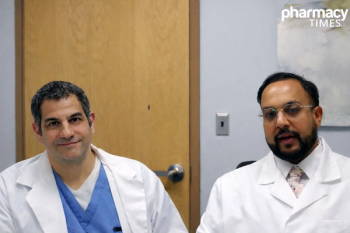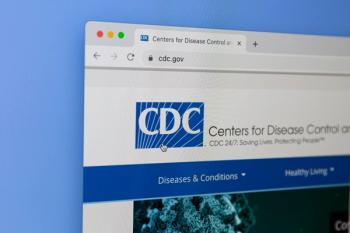
Role of the Pharmacist in Institutional Readiness, Patient Readiness for Bispecifics
Kirollos Hanna, PharmD, BCPS, BCOP, FACCC, discusses the role of the pharmacist in relation to bispecific care team readiness and patient readiness.
Pharmacy Times interviewed Kirollos Hanna, PharmD, BCPS, BCOP, FACCC, director of pharmacy, Minnesota Oncology and assistant professor of pharmacy, Mayo Clinic College of Medicine, on his presentation at the Hematology/Oncology Pharmacy Association (HOPA) Annual Conference 2024 in Tampa, Florida titled “Key Considerations for Operationalizing Bispecifics in Relapsed or Refractory Multiple Myeloma.” Hanna addresses the role of the pharmacist in relation to bispecific care team readiness and patient readiness.
Pharmacy Times: What is the role of the pharmacist on the care team in relation to bispecific care team readiness?
Kirollos Hanna, PharmD, BCPS, BCOP, FACCC: Pharmacists play a critical role, I think, when it comes to facility readiness around bispecifics. You'll find, for example, that some bispecifics as mentioned may have a REMS [Risk Evaluation and Mitigation Strategy] program. A lot of the REMS program require that there is an institutional champion, for example, that helps navigate the various requirements, ensure staff is trained, policies and procedures are in place, etc. And oftentimes that falls within the scope of pharmacy. So, you'll look at many systems, they'll set that operational champion to be a pharmacist, maybe someone specializing in myeloma, someone who works in a myeloma group, or even an administrator who can take on that role.
Pharmacists, what they can do for the institution is they can work with the providers and key stakeholders to help get that institution ready. Ultimately, it's going to be developing SOPs [standards of practice]. You'll find with some institutions, they, for example, limit the administration of bispecific therapy, as well as CAR T-cell therapy, to a single location, just so that they know that location is going to be equipped, the staff is trained, the physicians are trained, others may expand it a little bit more, but still try to have some type of control over it. There are documentation procedures, or requirements that are sometimes tied to these REMS programs. Developing staff training, as well. What do you do to onboard new staff members? How do you ensure staff members are educated on a certain cadence, whether that's every 6 months, or annual type of training, and pharmacists, I think, play a pivotal role in developing these types of things. And then another part of it too is just helping develop supportive care protocols for a practice. You're going to need institutional protocols around infectious prophylaxis, you're going to need institutional protocols around CRS [cytokine release syndrome] management, and what that looks like; ICANS [immune effector cell-associated neurotoxicity syndrome], and how you monitor patients, especially the day after the administration, that's when you see some of these adverse events. Or if you do have a ramp up, how is that patient monitored, if they're not ramped up in the hospital. So, developing all of these things, I think, fit right within the scope of pharmacy working with some of those stakeholders.
Pharmacy Times: What are specific considerations for the patient in relation to readiness for bispecifics, and what is the pharmacist’s role in counseling patients on this subject?
Hanna: So patient readiness is very important as well with bispecific therapy. And when you look at bispecific therapy, one of the key things as we sort of highlighted is, if the institution is not ready, that patient may not be able to be serviced at that particular institution. So that's why patient readiness is important, institutional readiness is important, and they can all go hand in hand.
Now, for a patient, it's going to be very important that they know the expectations, especially during early cycles, or the first cycle of bispecific therapy administration, whether we're talking about [blinatumomab (Blincyto; Amgen Inc)], whether we're talking about [teclistamab-cqyv (Tecvayli; Janssen Biotech, Inc)], [talquetamab (Talvey; Janssen Biotech, Inc)], and [elranatamab-bcmm (Elrexfio; Pfizer)], whether it's [tebentafusp-tebn (Kimmtrak; Immunocore Limited)] for uveal melanoma, the risk of some of those key adverse events—your CRS, ICANS, and neurotoxicity—are most likely to occur during what we call the ramp up phase or step up dosing. So that's why oftentimes, these patients have to be part of an institution that has an infrastructure that's able to monitor these patients.
You'll see different kinds of models, you'll see some institutions that initiate patients in the hospital, and they're under direct observation. If things come up, it can be addressed quickly. You'll see other institutions that initiate patients in the outpatient setting, but then have this agreement with the patient that they must stay within a certain distance or time away from the hospital, a 30 minute radius, for example. So that's going to be an important thing to prepare the patient [on], especially during the ramp up discussing the expectations.
Now, when patients transition to the maintenance phase, a lot of these bispecifics are administered weekly or biweekly. So, there is a burden to the patient of coming into infusion centers or institutions to get that administration. So having that expectation is also going to be very important, but also that the patient and their caregiver is aware that they need to report any signs of fever, they need to report any signs of extreme fatigue and lethargy because those could be indicative of early grades of some of these adverse events. Fevers could manifest as an infection. Some of these therapies have very high rates of grade 3 and 4 infections, and it could be a sign of cytokine release syndrome. So, educating that patient, having that patient know what to expect, when the call, and who to call is going to be important.
The other component is obviously cost or financial toxicity. These patients, while we have great finance teams and everything that we can navigate through this, we have to discuss that with our patients as well. And, to your question around what can pharmacists do, so obviously, that patient education, helping navigate any type of financial barrier with financial teams, all of that is going to be important. But then the other aspect to it all for patient readiness is that these patients are going to be on prophylactic supportive care medications, so they [need to] know how to take those medications and actually take those medications. Sometimes patients may need to come in for an IVIG [intravenous immunoglobulin] infusion if they are hypergammaglobulinemic. We see that with some of the myeloma bispecifics—blinatumomab, for example, with some regimens, blinatumomab is a continuous infusion. And when that bag of blinatumomab runs out, you have a small window of time of having to swap that bag out. So that is an important aspect to ensure that the patient can adhere to this window of time. So, there's a lot of logistics that we have to make sure are in place that the patient is prepared for as well as their caregiver. But again, I mean, these are therapeutics we can’t avoid despite some of these barriers and logistics just because of the significant impact they had on some of these disease states.
Newsletter
Stay informed on drug updates, treatment guidelines, and pharmacy practice trends—subscribe to Pharmacy Times for weekly clinical insights.













































































































































































































